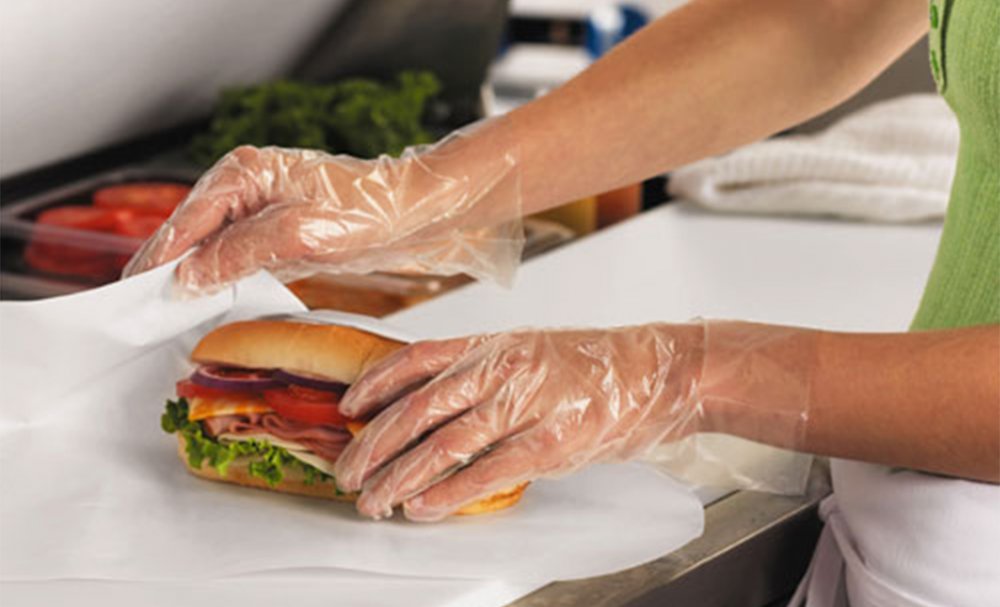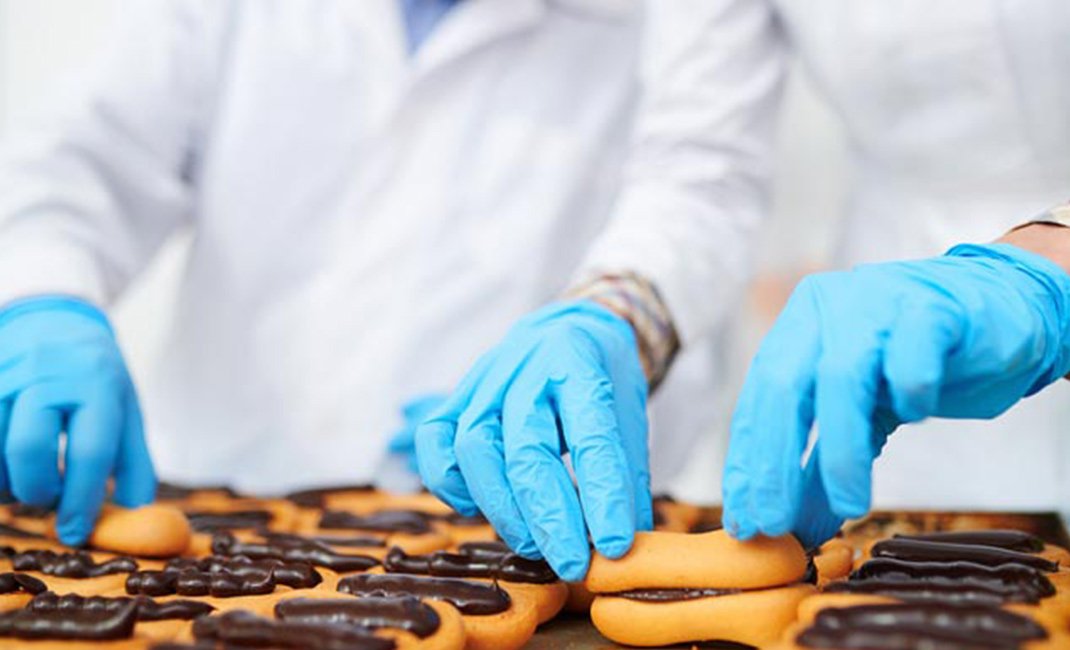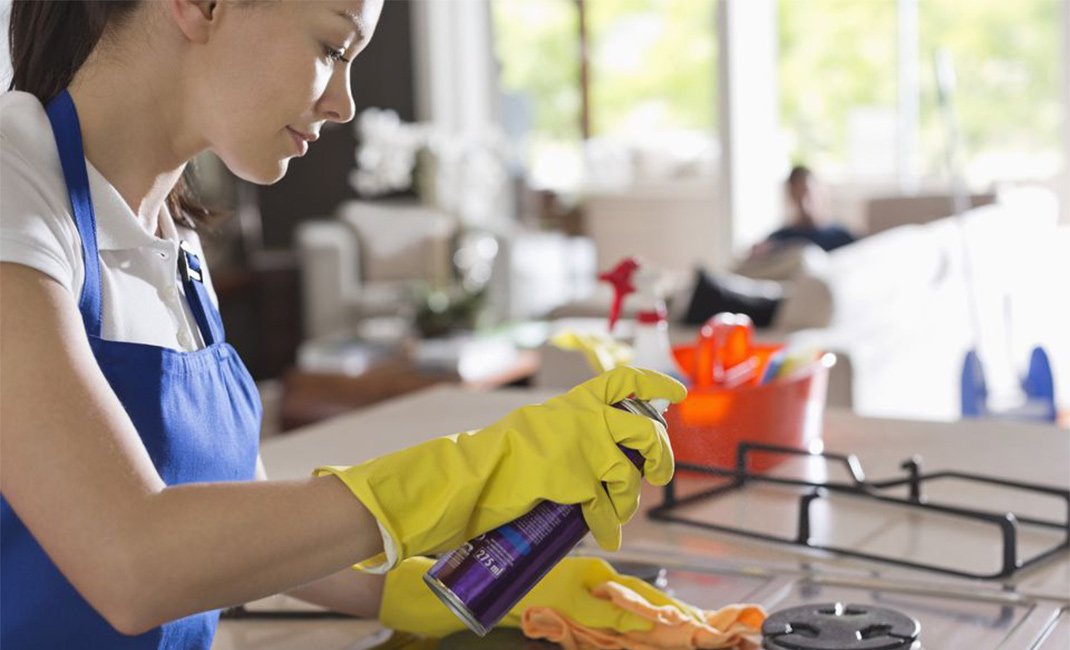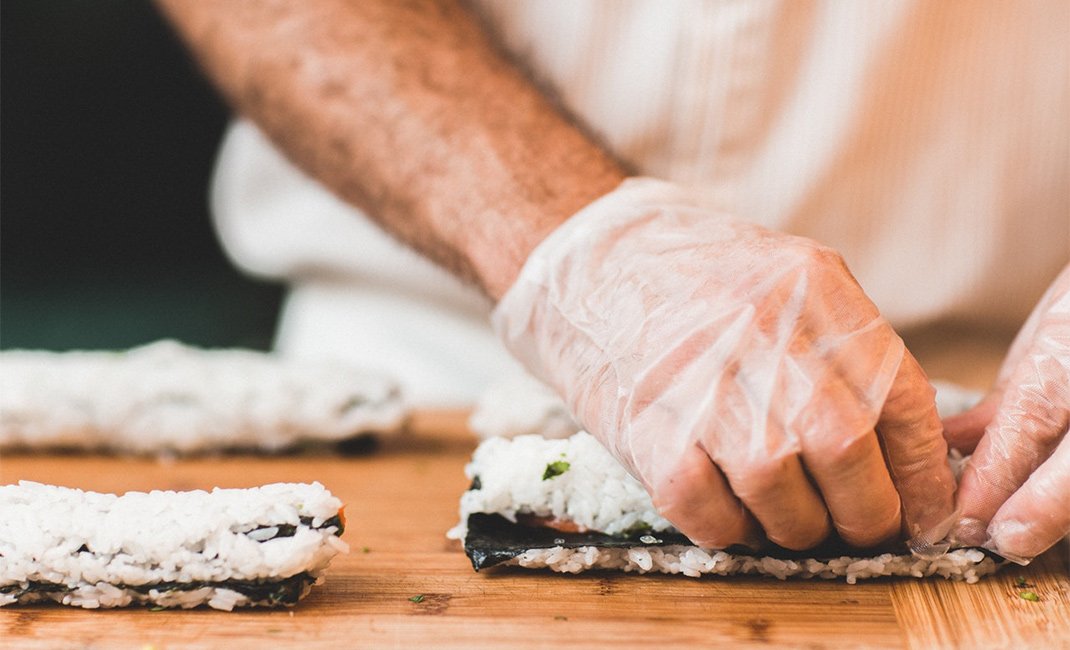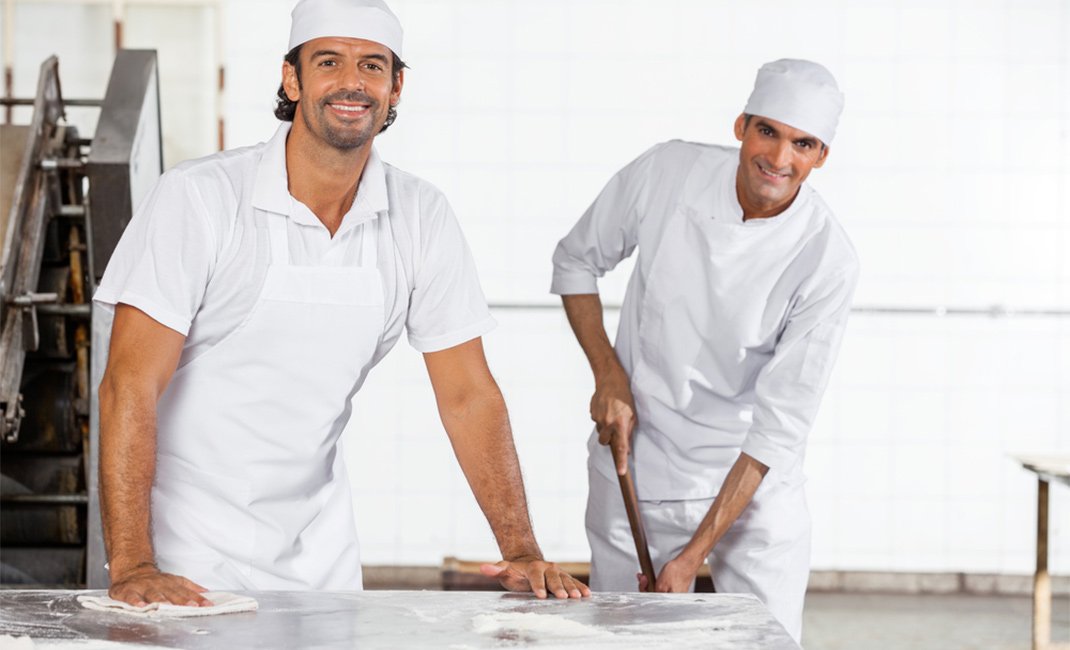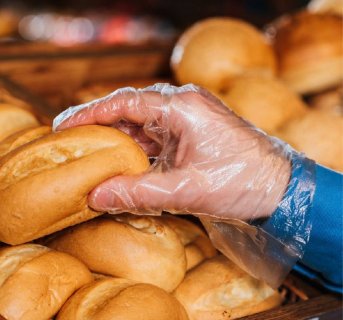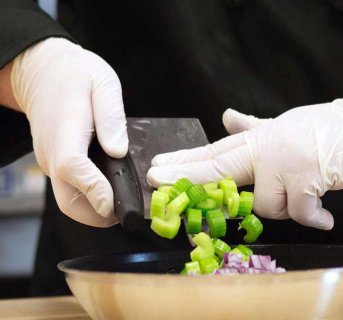Some of the most common problems with injury and sanitation in industrial kitchens could be connected to proper glove use. According to a study, most food service workers get injured on the job either with cuts, burns, strains, or sprains. But at least with burns and cuts, the proper use of gloves could help. Additionally, proper glove usage can ensure accordance with food sanitation requirements.
Different food preparation and handling tasks require different types of gloves. Below you will see which type of gloves is the perfect match for different types of work.
Bakery
In a bakery, employees must navigate the handling of cooled products and removing hot products from ovens. If you need to regularly change your gloves, an HDPE glove is your best choice.
If you are handling hotter foods, then latex gloves can also help the prevention of burns. Latex gloves can be used for unloading or loading ovens, or moving hot items, like cookies, from one spot to another. They are also used in chemical handling. The only problem with this alternative is that they are more expensive than HDPE gloves. Additionally, some people do have latex allergies, so if that is the case, vinyl gloves can be another alternative.
Deli
Gloves need to be changed very often when working in a deli, making sandwiches, or dishing outsides. HDPE gloves are especially well suited to deli tasks, like portioning meats and cheeses and serving customers.
Buffet line
Buffet lines are particularly susceptible to spreading disease, making it even more important to wear gloves when preparing or serving buffet-style foods. As always, be sure to wash your hands before wearing gloves – and wash them again after removing the gloves.
When preparing foods, buffet workers often need gloves that provide touch sensitivity and dexterity. Vinyl gloves, for example, can help in this case with food handling. Easily disposable and efficient to slip on and off, HDPE gloves are another alternative. However, if employees are serving hot foods with tongs, spoons, or spatulas, it would be better for them to wear latex gloves to prevent burning themselves.
Industrial kitchen
Working in an industrial kitchen means that you’ll be performing high-risk tasks, like cutting meat, in combination with duties that have less risk involved, like preparing sauces.
If you are at risk for knife injury, you don’t want to injure yourself by “undergloving.” Instead, wear nitrile gloves that are more resistant to knife punctures than gloves made of vinyl or latex are. With these gloves, you’ll be able to perform complex knifework with less worry about injuring yourself.
Remember, though, no matter what gloves you are wearing, always change your gloves when preparing a new type of food to avoid cross-contamination.
Choosing the right glove for each food preparation and handling makes sure that employees will be protected from workplace injuries. Proper glove usage is also in compliance with food handling requirements.
(www. janasafety.gr)

